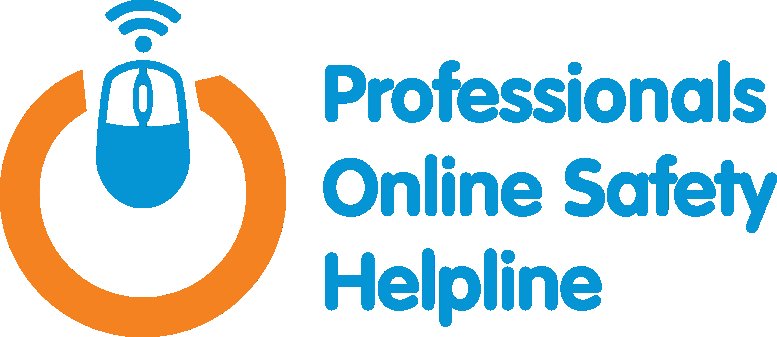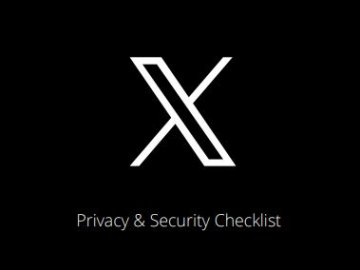Sexting is an issue we increasingly see on the Professionals Online Safety Helpline as young people develop more relationships online. The sexting cases we support are often multifaceted and complex, so we have created some guidance to help you understand the current resources available to support any safeguarding issues regarding sexting.
The guidance below generally reflects the UK Council for Internet Safety's guidance on sexting, which offers a comprehensive and detailed explanation of how to address a sexting incident in educational settings throughout England.

What is Sexting?
Although sexting can mean different things to different people, in this context ‘sexting’ refers to the sharing of nudes and semi-nudes or sexual messages. This can be in the form of a photo, video, or live stream. Sexting can take place on many different platforms, including social media sites, gaming sites, or messaging apps.
Sexting is often referred to in different ways, such as ‘nude image sharing’, ‘nudes', ‘sexts’, or ‘nude selfies’.
Is Sexting a Crime?
In England, creating and sharing nudes and semi-nudes of under-18s (including those created and shared with consent) is illegal, which makes responding to incidents involving children and young people complicated.
It is important to remember that the motivations behind under-18-year-olds taking and sharing nude, semi-nude images or other forms of content are not always criminally or sexually motivated.
There are many different factors to consider when responding to a sexting incident, including the ages of the people involved, and whether coercion or consent was involved in the decision to share sexual images or messages.
Any adult who shares or creates nudes or semi-nudes of under-18-year-olds is committing a form of child abuse and must be referred to the police as a matter of urgency.
Responding to a Sexting Incident
Click on the icons below for more information.
Responding to Initial Disclosures
It is important to stay calm and keep the environment you are in as relaxed as possible, this will help to support the young person. Remember, issues around sexting are a safeguarding issue, and you should therefore ensure you follow your setting’s safeguarding policies and processes.
If you are not a DSL, you should refrain from asking for further information about the imagery.
Remember not to use language that implies blame or judgment. Recognise the courage it has taken to speak up and reassure them that they have done the right thing by raising their concern. Let them know that you will need to pass on this information to the DSL and be clear that this is so that you can provide the best possible support for them.
You can find out more about how to handle a sexting incident with our downloadable guidance.
The 2020 guidance from the UK Council for Internet Safety (UKCIS) shares the following guidance on how to respond to an incident involving sexting.
- Report it to your Designated Safeguarding Lead (DSL) or equivalent immediately, your setting’s child protection policy should be followed, and the young person should be reassured about the reporting process and support available from DSLs.
- It is illegal to view, share, save, or request that the young person share or download the imagery. If you do see the imagery by accident, you should report this to the DSL and seek support.
- Do not interfere with the imagery by deleting it or asking the young person to delete it.
- Do not request further information regarding the imagery from the young person.
- Do not share information about the incident to other members of staff, any young people involved, or parents and carers.
For further information, read the UKCIS guidance overview here.
Every instance of sexting is different, and there are many factors to consider when responding to a sexting incident, including aggravating factors such as:
- Adult Involvement
- Intent to Harm: Instances of abuse, blackmail, and coercion.
- Reckless Misuse: Images sent without consent or without thought, but without intent to cause harm.
To find out the full guidance on how to address and assess a sexting incident with consideration of any aggravating or experimental factors, DSLs should read 1.6 ‘Understanding motivations and behaviour' of the UKCIS Guidance.
As a DSL, it is important to gather as much information as possible, including:
- Information on whether the incident involves images, videos, or messages.
- Who is featured in the content.
- Who sent the content.
- If any adults are involved.
- Where the content is located.
It is essential to record all decisions and steps taken during a sexting incident. Any documentation should explain why certain actions were or were not taken. Examples of this include explaining why it was not necessary to report an instance of sexting to the police, and why it can be handled internally. Remember, your approach should be child-centric and all decisions need to be justifiable and taken in the best interests of the child.
Once a sexting incident has been addressed, it is essential that your organisation reviews the case to see where procedures and responses can be improved or learned from. In line with your setting’s safeguarding policies and practices, you should ensure the child is provided with appropriate post-incident support as required.
Searching and Viewing Devices
It is important to make sure that staff, carers, and parents do not view any child's nudes or semi-nudes without good reason. Any response to a sexting incident should be evaluated based on the DSL’s understanding of the content involved.
Decisions made to view imagery should always be based on the judgment of the DSL and comply with the child protection policy and procedures in place. No imagery should be viewed if it will cause distress or harm to the young person involved.
Designated Safeguarding Leads should ensure the following:
- Viewing the imagery is the only way to make a decision about involving other agencies, as it isn’t possible to establish facts otherwise.
- The images need to be reported to a website or agency such as the Internet Watch Foundation, or could support a young person or parent to report the content.
- Viewing the imagery has been unavoidable due to a young person presenting it directly to a member of staff, or if content has been found on a school device.
If it is necessary to view images, the DSL should ensure:
- Any images should not be copied, printed, shared, or stored as that is illegal. If this has happened, police should be contacted.
- Any decisions should be discussed with the headteacher or senior leadership team.
- Viewing should be undertaken by the DSL with authority from the headteacher or senior leadership team.
- Viewing should take place with another member of staff present and should ideally take place on premises by a member of staff of the same sex as the young person involved.
It is essential to record how and why decisions were made to view the imagery in the safeguarding or child protection records.
Any decision about searching devices, viewing, or deleting images should be clearly explained to the child or parent based on their request.
For more information on searching, deleting, and confiscating devices in schools, you can read the DfE’s Searching, screening and confiscation advice.
When to Involve Others
Click on the icons below for more information.
There are occasions where sexting incidents do not need to involve the police, such as when an incident is ‘experimental’ rather than ‘aggravated.’ An experimental incident involves the sharing of nudes or semi-nudes without adult involvement and with no apparent intent to harm or reckless misuse.
Aggravated or abusive incidents of sexting should always be reported to the police through the Multi-Agency Safeguarding Hub (MASH).
Once an incident has been reported to the police, they will be able to ensure a thorough investigation through the collection of all evidence. Any incident reported to the police will be recorded as an incident on their crime systems.
If a device needs to be passed on to the police, the involved devices should be disconnected from Wi-Fi and data and turned off immediately. The device should be locked in a secure place until the police are able to collect it.
To find out more information about the reporting process, you should read 1.9 ‘The Police Response’ of the UKCIS Guidance.
Generally, when incidents are disclosed, it is best to tell the parents or guardians of any young person involved. Exceptions can include when there is a risk or harm to the child by doing this, or if the young person expresses that this could cause a genuine problem.
Whether to tell the guardians or not is ultimately up to the DSL's discretion, however, they should always ensure to record and justify their decision within the establishment incident logs.
If the parents are informed, it is usually best to support the young person and involve them in deciding how to approach the conversation, by finding out what would make it easier for them (e.g. being present at the time or not).
Child Sexual Abuse Material
Any incident that includes CSAM content online should be reported to the Internet Watch Foundation (IWF), who can identify and remove any content that includes child sexual abuse imagery.
You can also encourage children under the age of 18 to use Report Remove to help get an image or video of themselves taken down online. Report Remove is provided by IWF and Childline, and keeps the young person informed at each stage of their report, whilst providing further support when necessary.
Government Guidance
Sexting guidance can vary depending on your school's location. Read the applicable guidance across the UK below.




